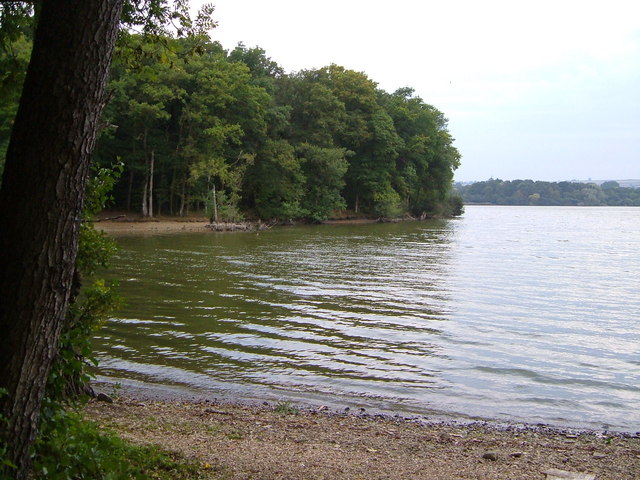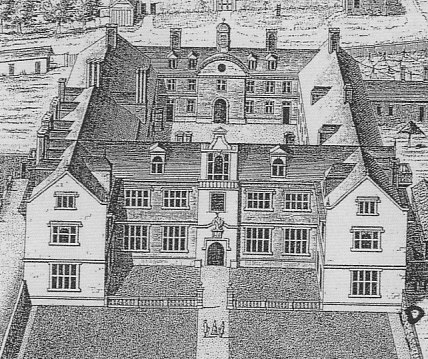|
Samuel Rolle (1669–1735)
Samuel Rolle (1669-1735) of Hudscott, Chittlehampton, Devon, was Member of Parliament, MP for Barnstaple (UK Parliament constituency), Barnstaple between 1705 and 1708. He was a member of a cadet branch of the influential Rolle family of Stevenstone. Origins He was the son of Dennis Rolle (d.1671) of Great Torrington, a lawyer of the Inner Temple, son of Sir Samuel Rolle (d.1647), Samuel Rolle (d.1647), MP, one of three distinguished grandsons (his brothers were Henry Rolle (d.1656) Chief Justice of the King's Bench & John Rolle (1598–1648), John Rolle (d.1648), MP) of Henry Rolle of Heanton Satchville, Petrockstowe, 4th son of the founder of the Devonshire Rolles, George Rolle (d.1552), MP, of Stevenstone. His elder brother was Robert Rolle (d.1660), Robert Rolle (d.1660), MP, whose wife was Lady Arabella Clinton, co-heiress to the ancient Baron Clinton, Barony of Clinton. Education He entered Exeter College, Oxford on 16 July 1687 and obtained the degree of BA in 1691. He ... [...More Info...] [...Related Items...] OR: [Wikipedia] [Google] [Baidu] |
East Ilkerton
Lynmouth is a village in Devon, England, on the northern edge of Exmoor. The village straddles the confluence of the West Lyn and East Lyn rivers, in a gorge directly below the neighbouring town of Lynton, which was the only place to expand to once Lynmouth became as built-up as possible. The villages are connected by the Lynton and Lynmouth Cliff Railway, which works two cable-connected cars by gravity, using water tanks. The two villages are a civil parish governed by Lynton and Lynmouth Town Council. The parish boundaries extend southwards from the coast, and include hamlets such as Barbrook and small moorland settlements such as East Ilkerton, West Ilkerton and Shallowford. The South West Coast Path and Tarka Trail pass through, and the Two Moors Way runs from Ivybridge in South Devon to Lynmouth; the Samaritans Way South West runs from Bristol to Lynton, and the Coleridge Way from Nether Stowey to Lynmouth. Lynmouth was described by Thomas Gainsborough, who honey ... [...More Info...] [...Related Items...] OR: [Wikipedia] [Google] [Baidu] |
Countisbury
Countisbury is a village and former civil parish, now in the parish of Brendon and Countisbury, in the North Devon district, in the county of Devon, England. It is on Exmoor, roughly two miles east of Lynmouth along the A39. It has a church and pub. The National Trust owns the other buildings. In 2001 the parish had a population of 66. On 1 April 2013 the parish was abolished and merged with Brendon to form "Brendon and Countisbury". Scholars now believe the Iron Age promontory fort A promontory fort is a fortification, defensive structure located above a steep cliff, often only connected to the mainland by a small neck of land, thus using the topography to reduce the Rampart (fortification), ramparts needed. The oldest kno ... of Wind Hill on Countisbury Hill was the site of the Battle of Cynuit in 878. References Villages in Devon Former civil parishes in Devon North Devon {{Devon-geo-stub ... [...More Info...] [...Related Items...] OR: [Wikipedia] [Google] [Baidu] |
Lynton
Lynton is a town on the Exmoor coast in the North Devon district in the county of Devon, England, approximately north-east of Barnstaple and west of Minehead, and close to the confluence of the West Lyn and East Lyn rivers. Lynton sits directly above the neighbouring village of Lynmouth; the two settlements are separated by a steep gorge. Governance Lynton is part of the Lynton and Lynmouth electoral ward whose total ward population at the 2011 census was 1,647. The two communities are governed at local level by Lynton and Lynmouth Town Council. Location and geography The two settlements are connected by the Lynton and Lynmouth Cliff Railway. The South West Coast Path and Tarka Trail pass through, and the Two Moors Way runs from Ivybridge in South Devon to Lynmouth. The Samaritans Way South West runs from Bristol to Lynton and the Coleridge Way from Nether Stowey to Lynmouth. The Valley of Rocks and Wringcliff Bay are to the west. History and buildings Evidence ... [...More Info...] [...Related Items...] OR: [Wikipedia] [Google] [Baidu] |
Chard, Somerset
Chard is a town and a civil parishes in England, civil parish in the English county of Somerset. It lies on the A30 road near the Devon and Dorset borders, south west of Yeovil. The parish has a population of approximately 14,000 and, at an elevation of , Chard is the southernmost and one of the highest towns in Somerset. The name of the town was ''Cerden'' in 1065 and ''Cerdre'' in the Domesday Book of 1086. After the Norman Conquest, Chard was held by the Bishop of Wells. The town's first charter was from John of England, King John in 1234. Most of the town was destroyed by fire in 1577, and it was further damaged during the English Civil War. A 1663 will by Richard Harvey of Exeter established Almshouses known as Harvey's Hospital. In 1685 during the Monmouth Rebellion, the pretender James Scott, 1st Duke of Monmouth, Duke of Monmouth was proclaimed King in the Town prior to his defeat on Battle of Sedgemoor, Sedgemoor. Chard subsequently witnessed the execution and traitor' ... [...More Info...] [...Related Items...] OR: [Wikipedia] [Google] [Baidu] |
Lynmouth
Lynmouth is a village in Devon, England, on the northern edge of Exmoor. The village straddles the confluence of the West Lyn River, West Lyn and East Lyn River, East Lyn rivers, in a gorge directly below the neighbouring town of Lynton, which was the only place to expand to once Lynmouth became as built-up as possible. The villages are connected by the Lynton and Lynmouth Cliff Railway, which works two cable-connected cars by gravity, using water tanks. The two villages are a Civil parishes in England, civil parish governed by Lynton and Lynmouth Town Council. The parish boundaries extend southwards from the coast, and include hamlets such as Barbrook and small moorland settlements such as East Ilkerton, West Ilkerton and Shallowford, Devon, Shallowford. The South West Coast Path and Tarka Trail pass through, and the Two Moors Way runs from Ivybridge in South Devon to Lynmouth; the Samaritans Way South West runs from Bristol to Lynton, and the Coleridge Way from Nether St ... [...More Info...] [...Related Items...] OR: [Wikipedia] [Google] [Baidu] |
Lee Abbey
Lee Abbey, founded in 1946, is an ecumenical Christians, Christian community between Woody Bay, Devon, Woody Bay and Lynmouth in Devon, England. It is a Grade II listed building. The first building on the site may have been a farmhouse built by Cistercian abbots of Forde Abbey around 1200. The current Gothic Revival buildings are from the 1850s. In the 1920s it was bought and used unsuccessfully as a hotel. During World War II a boys' school was Evacuations of civilians in Britain during World War II, evacuated to Lee Abbey. After the war the dilapidated buildings were bought for use as a Christian retreat, and extensive building work has taken place from the 1950s to the present day. The site now offers retreats, group weekends and Christian family holidays. The community also has accommodation in London. There is a beach with parking (a small donation is required), and there are wash rooms, a tea shop (not open Sundays or during the winter) and an occasional shop. History The ... [...More Info...] [...Related Items...] OR: [Wikipedia] [Google] [Baidu] |
Bremridge
Bremridge is a historic estate within the former hundred of South Molton in Devon, England. It is now within the parish of Filleigh but was formerly in that of South Molton. It is situated 8 miles north-west of South Molton. Since the construction of the nearby A361 North Devon Link Road direct access has been cut off from Bremridge to Filleigh and South Molton. The surviving wing of the mansion house built in 1654 is a Grade II* listed building. Bremridge Wood is the site of an Iron Age enclosure or hill fort, the earthwork of which is situated on a hillside forming a promontory above the River Bray. In Bremridge Wood survives a disused tunnel of the former Great Western Railway line between South Molton and Barnstaple, much of the course of which has been used for the A361. The tunnel is 319 yards long and was identified as "Bremridge Tunnel" in the 1889 Ordnance Survey map but as "Castle Hill Tunnel" in subsequent editions. Descent of the manor Anglo-Saxon The Anglo-Saxon ... [...More Info...] [...Related Items...] OR: [Wikipedia] [Google] [Baidu] |
John Dodderidge (died 1666)
John II Dodderidge (1610–1659) of Bremridge in the parish of South Molton, Devon, was a lawyer who was elected MP for Barnstaple in 1646 and 1654, for Bristol in 1656 and for Devon also in 1656, and chose to sit for Devon, but was prevented by Oliver Cromwell from taking his seat. Origins Dodderidge was the son of Pentecost Dodderidge (died ) of Barnstaple in North Devon, thrice a Member of Parliament for Barnstaple in 1621, 1624 and 1625, by his wife Elizabeth Wescombe. Pentecost Dodderidge was the brother and heir of Sir John I Doddridge (1555–1628), a Justice of the King's Bench, who had purchased for his seat the estate of Bremridge, near South Molton, Devon. Career Dodderidge entered Middle Temple on 26 June 1629 and was called to the bar on 19 May 1637. In 1646, he was elected as a Member of Parliament for Barnstaple in the Long Parliament. He was appointed a Justice of the Peace for Devon on 26 July 1647. He was re-elected as MP for Barnstaple in 1654 in the First ... [...More Info...] [...Related Items...] OR: [Wikipedia] [Google] [Baidu] |
Weare Giffard
Weare Giffard is a small village, civil parish and former Manorialism, manor in the Torridge District, Torridge district, in north Devon, England. The church and manor house are situated 2 1/2 miles NW of Great Torrington in Devon. Most of the houses within the parish are situated some 1/2-mile east of the church. The church is situated on a hillside to the north and slightly above the wide and flat valley floor of the River Torridge. The Church of the Holy Trinity and the adjacent Weare Giffard Hall are designated members of the Grade I listed buildings in Devon. In 2011 the parish had a population of 345. History The historian of Devon Tristram Risdon (d. 1640) supposed the name Weare to be derived from a fish weir which was historically situated in the river to catch fish. The construction of a fish-weir generally required a licence from the feudal overlord, as naturally these affected the catches of other inhabitants further along the river. Many disputes are recorded in t ... [...More Info...] [...Related Items...] OR: [Wikipedia] [Google] [Baidu] |
Heanton Satchville, Petrockstowe
Heanton Satchville was a historic Manorialism, manor in the parish of Petrockstowe, North Devon, England. With origins in the Domesday manor of Hantone, it was first recorded as belonging to the Yeo family in the mid-14th century and was then owned successively by the Rolle, Walpole and Trefusis families. The mansion house was destroyed by fire in 1795. In 1812 Baron Clinton, Lord Clinton purchased the manor and mansion of nearby Huish, Torridge, Huish, renamed it Heanton Satchville, and made it his seat. The nearly-forgotten house was featured in the 2005 edition of Rosemary Lauder's "Vanished Houses of North Devon". A farmhouse now occupies the former stable block with a large tractor shed where the house once stood. The political power-base of the Rolle family of Heanton Satchville was the pocket borough seat of Callington (UK Parliament constituency), Callington in Cornwall, acquired in 1601 when Robert Rolle (died 1633) purchased the manor of Callington, Cornwall, Calling ... [...More Info...] [...Related Items...] OR: [Wikipedia] [Google] [Baidu] |





